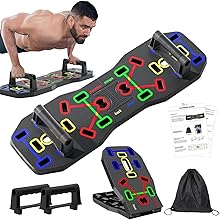
26-Year-Old CEO Makes Smart Gun, But Does Anyone Want It?
NDTV
The weapons being tested at this site are smart guns: They can identify their registered users and won't fire for anyone else. Smart guns have been a notoriously quixotic category for decades.
In an office parking lot about halfway between Denver and Boulder, a former 50-foot-long shipping container has been converted into a cramped indoor shooting range. Paper targets with torsos printed on them hang from two parallel tracks, and a rubber trap waits at the back of the container to catch the spent bullets. Black acoustic-foam padding on the walls softens the gunshot noise to make the experience more bearable for the shooter, while an air filtration system sucks particulates out of the air. It's a far cry from the gleaming labs of the average James Bond movie, but Q might still be proud.
The weapons being tested at this site are smart guns: They can identify their registered users and won't fire for anyone else. Smart guns have been a notoriously quixotic category for decades. The weapons carry the hope that an extra technological safeguard might prevent a wide range of gun-related accidents and deaths. But making a smart gun that's good enough to be taken seriously has proved beyond difficult. It's rare to find engineers with a strong understanding of both ballistics and biometrics whose products can be expected to work perfectly in life-or-death situations.
Some recent attempts have amounted to little more than a sensor or two slapped onto an existing weapon. More promising products have required too many steps and taken too much time to fire compared with the speed of a conventional handgun. What separates the Biofire Smart Gun here in the converted shipping container is that its ID systems, which scan fingerprints and faces, have been thoroughly melded into the firing mechanism. The battery-powered weapon has the sophistication of high-end consumer electronics, but it's still a gun at its core.
During two target sessions earlier this year at the Colorado headquarters and range of Biofire Technologies Inc., the gun I selected from a table recognized me without an appreciable delay each time I picked it up. I let off several rounds, and the weapon felt just like many of the handguns I've fired in the past, delivering a light kick. Other users registered for permission to use the gun had the same experience, whereas nothing happened when people who hadn't registered pulled the trigger. On the whole, the target practice confirmed that the smart gun worked as billed-and that I still have mediocre aim.





















 Run 3 Space | Play Space Running Game
Run 3 Space | Play Space Running Game Traffic Jam 3D | Online Racing Game
Traffic Jam 3D | Online Racing Game Duck Hunt | Play Old Classic Game
Duck Hunt | Play Old Classic Game